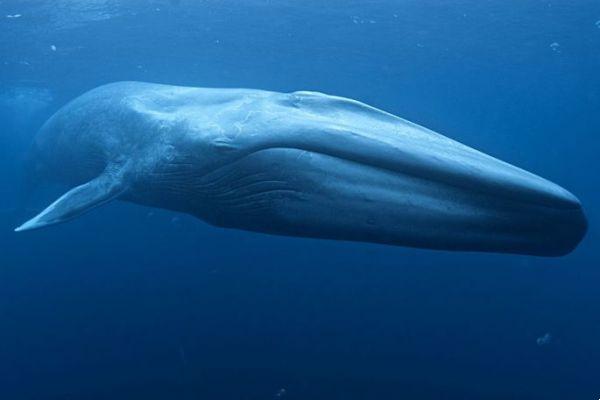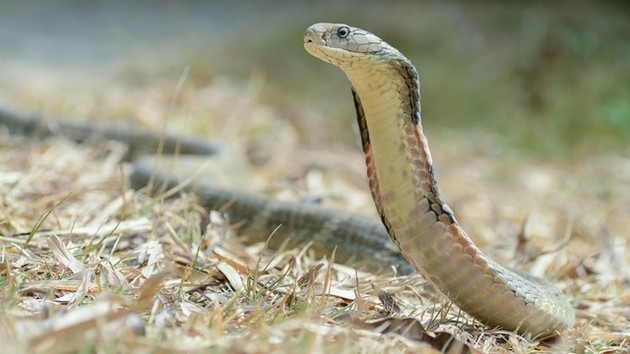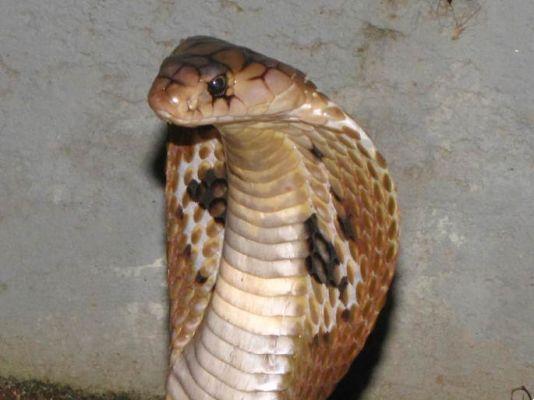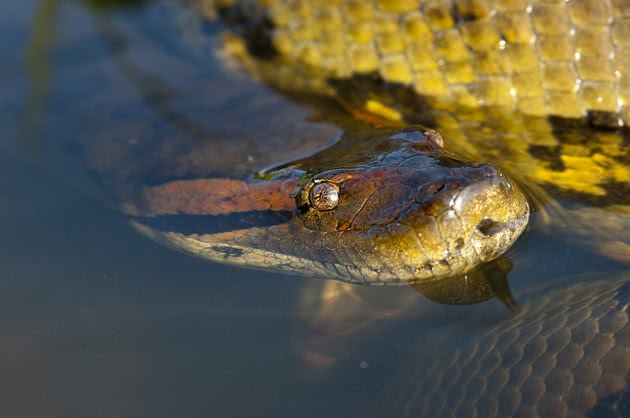The largest animals in the world are whales. In addition to being huge, they are extremely heavy. The largest whale in the world is the blue whale, which can reach 33,5 meters in length, the equivalent of a 10-story building, and 190 tons, the same weight as 12 coaches!
1. Blue whale (Balaenoptera musculus)

- Maximum length: 33,5 meters
- Maximum weight: 190 tons
The data above refer to the weight and size of the largest specimen of the blue whale ever found, not only the largest and heaviest whale that exists, but also the biggest animal that ever lived on earth🇧🇷 On average, blue whales are 25 meters long and weigh 110 tons. Can you imagine?
Newborn babies are 8 meters long and, during breastfeeding, puppies gain 90 kg per day! And they are only weaned after they acquire about 16 meters in length. These extraordinary animals can live up to 110 years.
2. Whale-fin (Balaenoptera physalus)

- Maximum length: 20 meters
- Maximum weight: 80 tons
In addition to the 50 cm curved dorsal fin, what characterizes fin whales is their enormous, elongated body. It is possible that some individuals that swim in the northern seas can reach more than 20 meters in length.
A curious fact about these whales is their sexual behavior. It is believed that they are monogamous and, as they do not have a specific mating location, males emit low-frequency sounds to attract females. Those "mating songs" can travel thousands of kilometers!
3. Sperm Whale (Physeter macrocephalus)

- Maximum length: 20 meters
- Maximum weight: 45 tons
The sperm whale is a special case, since it belongs to a suborder of cetaceans, the odondocetes🇧🇷 All other whales on this list belong to the suborder mysticetes. The difference between these groups is already in the name: the odondocetes, like the sperm whale, have teeth, while the mysticetes filter their food through bristles inside the mouth.
Immortalized by Herman Melville in the novel Moby Dick, the sperm whale is the largest toothed whale in the world, reaching an extraordinary 20 meters in length. A curiosity about it is its breath: if other whales can spend a few minutes without breathing on the surface, the sperm whale is capable of staying submerged for up to an hour, thus being able to swim at great depths.
4. Sei whale (Balaenoptera borealis)

- Maximum length: 20 meters
- Maximum weight: 45 tons
Although the largest sei whale ever found was 20 meters long, adult sei whales average between 12 and 15 meters in length. Sei whales are found in all seas around the globe, with the exception of the polar and tropical zones. This is one of the fastest whales in the world, being able to swim at 50 km/h!
5. Bowhead Whale (Balaena mysticetus)

- Maximum length: 18 meters
- Maximum weight: 100 tons
These whales like cold waters - their name, bowhead whale, is not for nothing. They can be seen in the northern hemisphere, either in the Atlantic or Pacific Ocean. In English, it is known as bowhead ("bow head"), a name that refers to the shape of its lower jaw. Its enormous size is what protects it from marine predators such as the killer whale.
6. Northern Right Whale (Eubalaena glacialis)

- Maximum length: 18 meters
- Maximum weight: 80 tons
The Northern Right Whale, which lives in the Atlantic, is very similar to the Pacific Right Whale. But, in addition to living in different regions, they constitute genetically distinct groups. Its head is extremely large, comprising 1/3 of the length total body. Due to their slowness and the fact that they approach the coast, these whales have suffered a lot over the years from the action of hunters. It is estimated that today there are less than 300 individuals left of the northern franc, which is at serious risk of extinction.
7. Southern right whale (Eubalaena australis)

- Maximum length: 18 meters
- Maximum weight: 55 tons
They don't have a dorsal fin, like minkes, for example. Another difference from minkes is that right whales are extremely slow. They have a thick layer of fat and calluses on the head, which appear white due to the "whale lice" (crustacean colonies) that live in these places. They usually visit the south coast of Brazil in winter and spring.
8. Gray whale (Eschrichtius robustus)

- Maximum length: 15 meters
- Maximum weight: 36 tons
Robustus is a word of Latin origin that means "strong as an oak"🇧🇷 And indeed, the strength of the gray whale is phenomenal. They are known for protecting their young with great bravery, which earned them the nickname of Devilfish ("devil fish") by the old whalers.
As they usually feed close to the shore, it is not uncommon to see them leaping with their gigantic body mass and falling sideways or backwards into the water. They say they do this to remove the parasites that over the years have lodged in your body.
9. Humpback whale (Megaptera novaeangliae)

- Maximum length: 15 meters
- Maximum weight: 30 tons
In 2018, a humpback made news around the world. That's because she was caught snapping a sea lion, an event never recorded in all of history. The author of the right click, the American biologist Chase Dekker, guarantees that the terrified sea lion came out of this story unharmed. After all, humpback whales don't have teeth and feed on crustaceans and small fish, such as herring. Sea lions are too big for this whale's esophagus.
10. Bryde's Whale (Balaenoptera edeni)

- Maximum length: 15 meters
- Maximum weight: 20 tons
Bryde's whales can be found in the Atlantic, Pacific and Indian oceans, but their preference is always for the warmer waters of tropical and subtropical regions. Swim in cold water, never! They have a very diversified diet: they eat sardines, anchovies, squid and krill (an invertebrate animal similar to shrimp). Do you know how many kilos a whale like that can eat in a single day? 660 kg!
11. Minke whale (Balaenoptera acutorostrata)

- Maximum length: 11 meters
- Maximum weight: 14 tons
Minke whales, as they are popularly known, can be seen on the southern coast of Brazil🇧🇷 They are characterized by a double coloration: a light belly and a black back, like that of an orca. Incidentally, the orca, which is not exactly a whale, is a possible predator of the minke. Balaenoptera acutorostrata is agile (it can swim at 30 km/h), but sometimes this is not enough to outwit predators.
12. Pacific right whale (Eubalaena japonica)

- Maximum length: 10 meters
- Maximum weight: 10 tons
As the name implies, these whales live in the Pacific, more specifically in the northern hemisphere, and can be found near the coast of the United States, Canada, China and Japan. Because they are very slow and very docile, right whales are an easy target for fishermen and are at serious risk of extinction🇧🇷 Nowadays it is rare to see any individual of this species, and it is estimated that there are only a few hundred of these whales left in the world.















